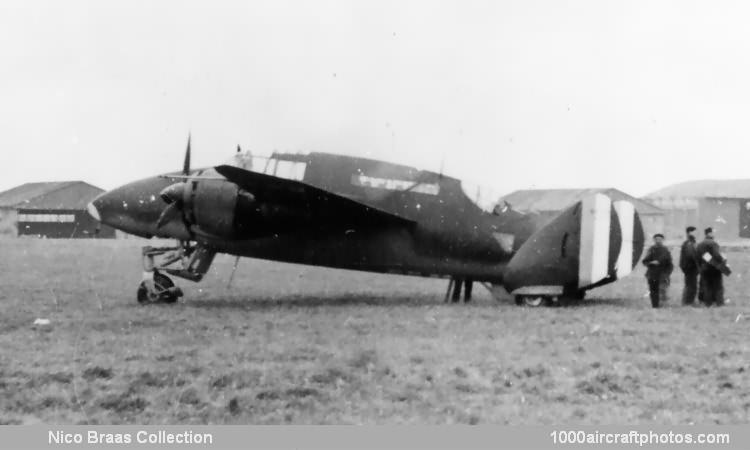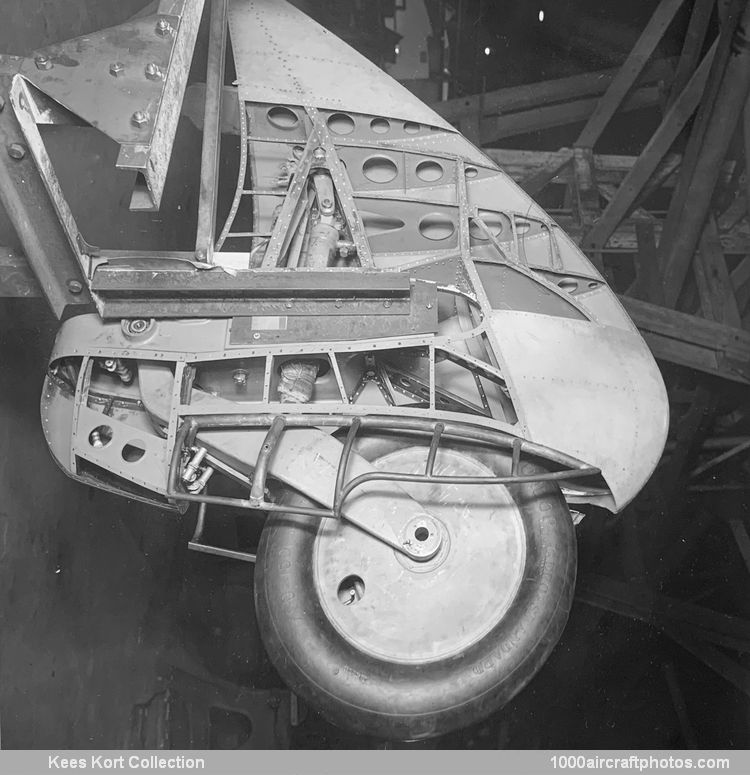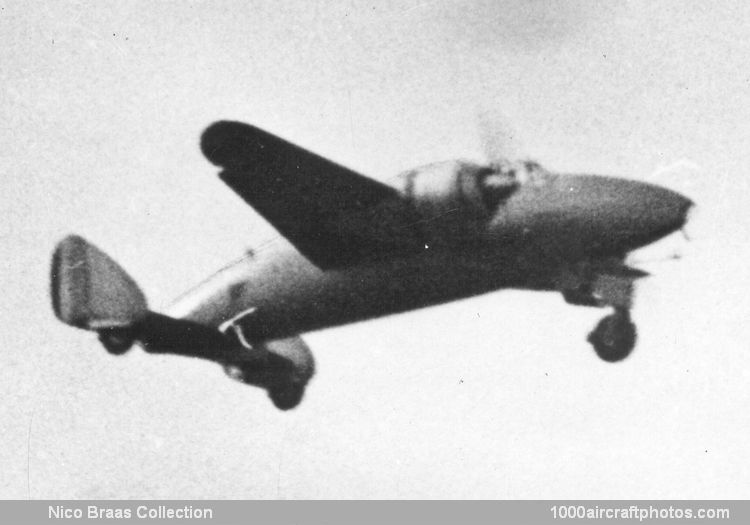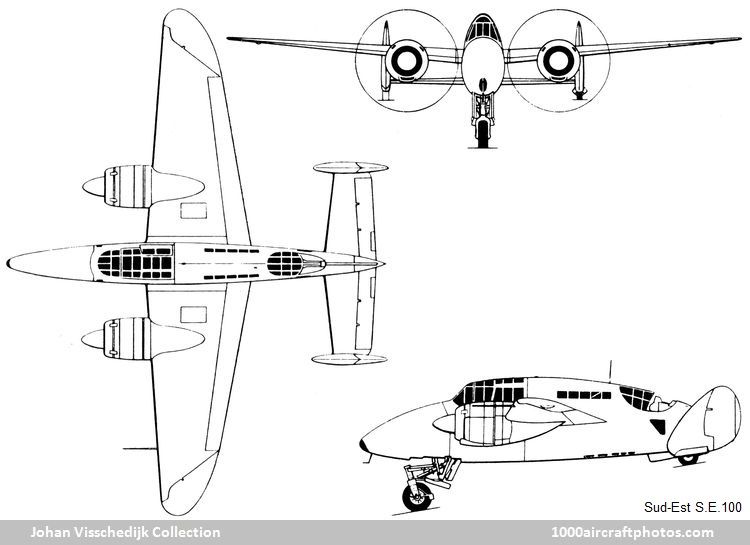09/30/2011. Remarks by Johan Visschedijk: "With the issue of an official specification for a twin-engined fighter to replace the Potez 631, Pierre Mercier and Jacques Lecarme of the Société Nationale de Constructions Aéronautiques de Sud-Est (SNCASE) projected an unconventional three-seat aircraft carrying an armament of three 0.787 in (20 mm) cannon, powered by two 800 hp Gnome & Rhône 14 Super-Mars radials and designated LeO 50 (the Liore-et-Olivier works being a part of the SNCASE).
It was soon obvious that the LeO 50 would be underpowered and would not meet the specification's performance requirements. The basic design was, therefore, scaled-up, 1,030 hp Gnome & Rhône 14N fourteen-cylinder air-cooled radial engines were incorporated and, redesignated S.E. 100, prototype construction commenced in April 1938 at La Courneuve, near Paris.
The wing was of wooden construction and comprised a one-piece torsion box of spruce to which the leading and trailing edges were attached with steel strips. The torsion box housed fuel tanks between the fuselage and engine nacelles, and in order to provide the maximum flap area, the ailerons articulated obliquely at the extreme tips of the wings. The Mercier engine cowlings were similar to those of the LeO 451 bomber, and the fuselage was a welded steel-tube structure with duralumin skinning.



